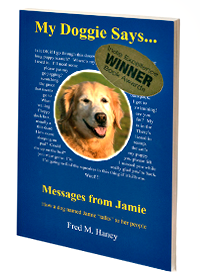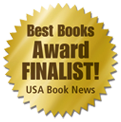Gen Z and millennials have expressed the most interest, with 38% and 37% of those surveyed, respectively, indicating they would be willing to try these options. Historically, alcohol consumption has often been a centerpiece of social gatherings. But today, alternative activities like wellness retreats, sober-friendly events and even dry bars are becoming increasingly popular. Studies have shown that alcohol intake is a risk factor for cardiovascular and liver diseases, cancers and negatively impacts brain function. One comprehensive study debunked the previous misconception that drinking moderate amounts of alcohol every day could protect against death from heart disease or help you live a longer life. On the contrary, the study found that drinking even small amounts of alcohol increased the risk of death.
Alcohol intensifies violence against women
Beyond the immediate benefits, one of the most compelling reasons to reduce alcohol consumption is the positive effect on your long-term health. Consistently drinking less can significantly lower your risk of developing serious health conditions down the road. According to research, this includes a reduced likelihood of liver disease, heart problems, and certain types of cancer. Making mindful choices about alcohol is a proactive step you can take to protect your future self. It’s an investment in your long-term well-being that empowers you to live a healthier, more vibrant life for years to come.
Drug Addiction
These first steps Sober living house are all about gathering information and building a foundation for change, one day at a time, without pressure or judgment. Technology will play a significant role in supporting the sober curious movement. Apps like Reframe provide resources and community support for individuals looking to reduce their alcohol consumption. These platforms offer tools for tracking progress, accessing educational content, and connecting with like-minded individuals. It doesn’t necessarily mean giving up booze altogether or signing up to sobriety indefinitely.
Study Confirms Real-World Reliability of a Key Tool for Alcohol Screening
- Essentially, the goal is to reduce your alcohol intake without feeling that you can’t have a drink ever again.
- The involvement of celebrities creates a ripple effect, inspiring fans to consider their drinking habits and possibly adopt a sober curious approach.
- “There is nothing wrong with doing your own DIY version but it’s usually a much better experience and a much more successful experience doing the program as opposed to going it alone.”
- Some people may find it easier to moderate their alcohol consumption, while others may struggle significantly.
Over time, she gradually decreased her alcohol intake and decided to live fully alcohol-free. When cutting back on alcohol, you will notice that within time, you will have more energy throughout the day. This is mainly due to your improved sleep cycles and your hydration status. Alcohol is naturally a diuretic, meaning that it sober curious removes fluid from your body, leaving you dehydrated. Cutting back on alcohol prevents dehydration and the fatigue that comes with it. Waking up in the middle of the night and not being able to fall back asleep, tossing and turning, or waking up hours before your alarm clock are examples of how alcohol can disrupt your sleep.
Individualized Treatment

For some, that might mean drinking less, while for others, it could mean taking breaks. It’s all about finding what feels right for your life and wellness goals without the pressure of an all-or-nothing approach. A huge part of changing your drinking habits is discovering what you love to do without alcohol. Think about hobbies you used to enjoy or new ones you’ve always wanted to try. Maybe it’s joining a hiking group, signing up for a pottery class, or starting a weekend morning ritual of visiting a new coffee shop.
Life-Changing Habits That Will Melt Your Stress Away
The risk of damage to your health increases with each drink of alcohol consumed. At the start of the COVID pandemic, as the world locked down and people experienced overwhelming stress and uncertainty around the virus, alcohol use spiked. According to research published in JAMA Network Open, there was a 54% increase in national sales of alcohol for the week ending March 21, 2020, compared to the year prior.
What Is Sober Curiosity?

Customers over 18 are welcome to purchase drinks that are less reminiscent of those in a real liquor store—like wellness sodas made by brands such as Recess and Kin Euphorics—or to sample the beers at free tastings. Looking ahead, businesses need to rethink how they cater to a generation drinking less alcohol. Some businesses, like With Grace Marketplace — a bottle shop specializing in alcohol-free alternatives — are already doing this. One of the defining characteristics of Gen Z is its heightened sense of self-awareness. Movements like the sober curiosity movement — a term popularized by cultural commentator Ruby Warrington in her 2018 book — reflect this. Across the Atlantic, a United Kingdom report found that consumers aged 20 to 24 are nearly half as likely to prioritize spending on alcoholic beverages for home consumption compared to those aged 75 and older.
- “If I’m going to choose between drinking a $22 drink or paying rent, I’m probably gonna pay rent,” she explained.
- Increasing numbers of young people aren’t just sober curious; they are skipping alcohol altogether.
- Experiment with no- and low-alcohol drinks until you find options that genuinely excite you.
- Platforms like Reddit’s r/stopdrinking or local sober-curious meetups can offer solidarity.
- With packaging, branding, and a price-point that emulates that of premium gin, Forbes reports that Seedlip bottles can be found on the shelves of Michelin star restaurants and consumers’ homes alike.
- Historically, alcohol consumption has often been a centerpiece of social gatherings.
Create new habits
Results were weighted to be representative of the U.S. population by age, gender, region, ethnicity, marital status, https://aandd.ru/analiticheskie-vesi/what-does-it-mean-to-be-drunk-stages-of-2/ education level, and household income. The answer varies based on where people live and the laws within their state, county, or city. Some states have laws allowing people under 21 to drink nonalcoholic beverages with a parent or guardian present.






